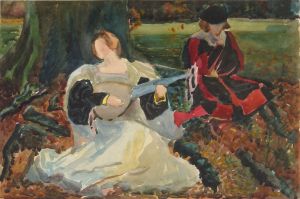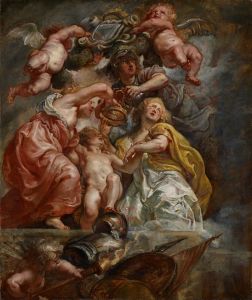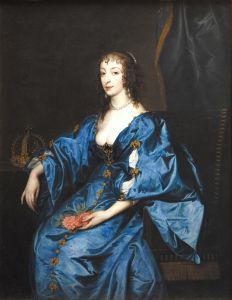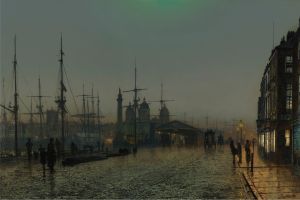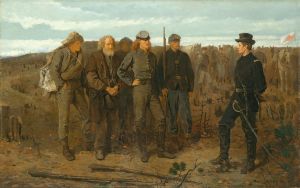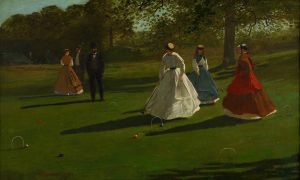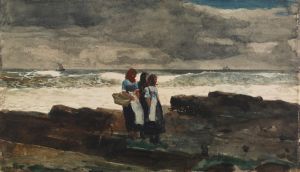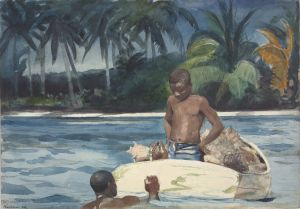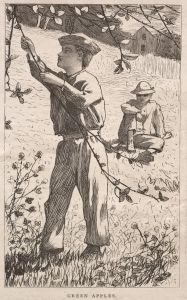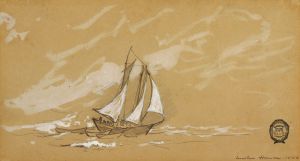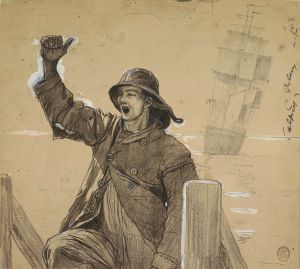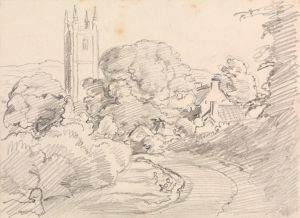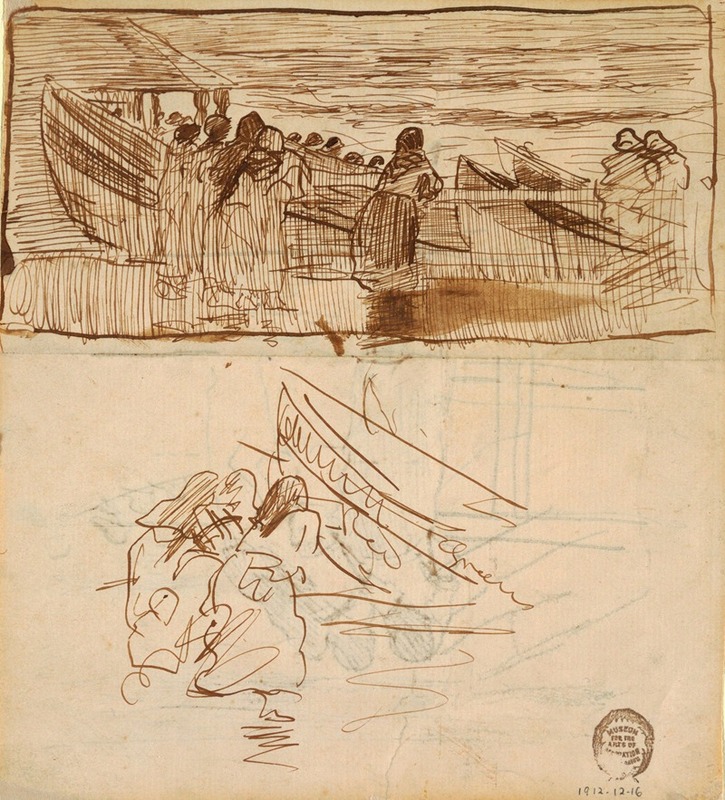
Two Studies of Women Standing behind Railing, Looking at the Launching of Dories, Cullercoats, England
A hand-painted replica of Winslow Homer’s masterpiece Two Studies of Women Standing behind Railing, Looking at the Launching of Dories, Cullercoats, England, meticulously crafted by professional artists to capture the true essence of the original. Each piece is created with museum-quality canvas and rare mineral pigments, carefully painted by experienced artists with delicate brushstrokes and rich, layered colors to perfectly recreate the texture of the original artwork. Unlike machine-printed reproductions, this hand-painted version brings the painting to life, infused with the artist’s emotions and skill in every stroke. Whether for personal collection or home decoration, it instantly elevates the artistic atmosphere of any space.
"Two Studies of Women Standing behind Railing, Looking at the Launching of Dories, Cullercoats, England" is a watercolor painting by the American artist Winslow Homer. Created in 1881, this work is part of Homer's extensive series of paintings and sketches produced during his stay in the fishing village of Cullercoats, located on the northeastern coast of England.
Winslow Homer (1836-1910) is renowned for his marine subjects and his ability to capture the essence of life along the coast. His time in Cullercoats, which lasted from 1881 to 1882, was particularly influential in his career. The village, with its rugged coastline and the daily lives of its fishing community, provided Homer with a wealth of inspiration. The artist's works from this period are noted for their detailed observation and sympathetic portrayal of the local inhabitants, especially the women who played a crucial role in the community.
In "Two Studies of Women Standing behind Railing, Looking at the Launching of Dories, Cullercoats, England," Homer depicts two women observing the launch of small fishing boats, known as dories. The painting is executed in watercolor, a medium that Homer mastered and used extensively throughout his career. The use of watercolor allowed him to capture the delicate interplay of light and shadow, as well as the subtle variations in color that characterize the coastal environment.
The composition of the painting is notable for its simplicity and focus on the figures of the women. They are shown standing behind a railing, which suggests a sense of separation or observation. The women's clothing and posture indicate their involvement in the daily life of the fishing community, and their attentive gaze towards the dories highlights the importance of these boats in their lives. The dories themselves are small, flat-bottomed boats that were commonly used for fishing in the region.
Homer's attention to detail and his ability to convey the atmosphere of the scene are evident in this work. The watercolor medium allows for a fluidity and transparency that enhance the sense of immediacy and realism. The artist's use of color is restrained yet effective, with a palette that reflects the muted tones of the coastal landscape.
"Two Studies of Women Standing behind Railing, Looking at the Launching of Dories, Cullercoats, England" is a testament to Winslow Homer's skill as an observer and interpreter of the human condition. His time in Cullercoats marked a significant period in his artistic development, and the works he produced there continue to be celebrated for their insight and sensitivity.
This painting is part of the collection at the Art Institute of Chicago, where it is appreciated for its historical and artistic significance. Homer's Cullercoats series remains an important part of his oeuvre, offering a glimpse into the life of a 19th-century fishing village and the enduring human spirit.





